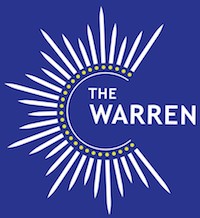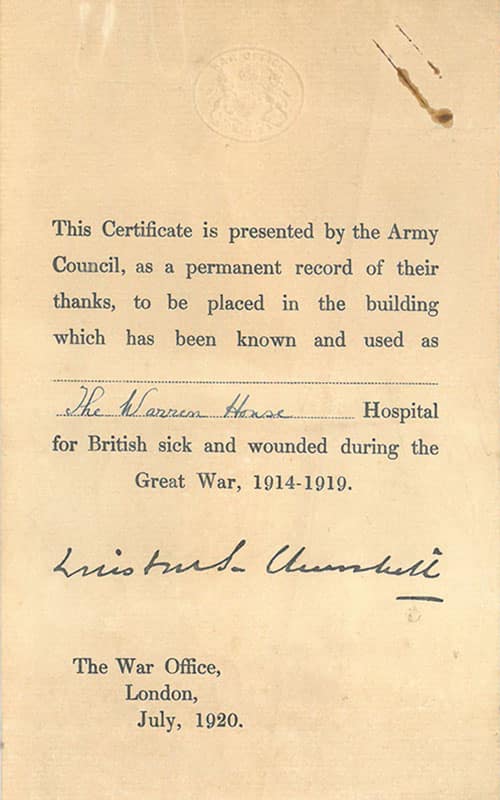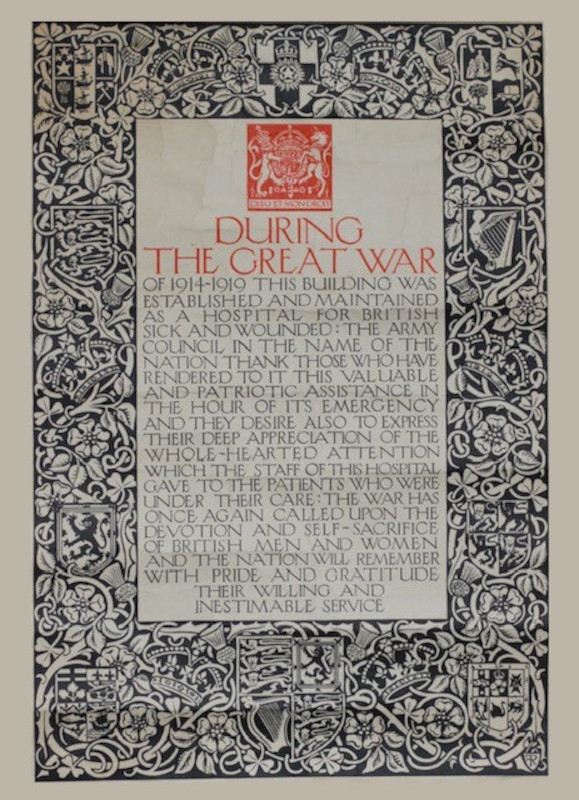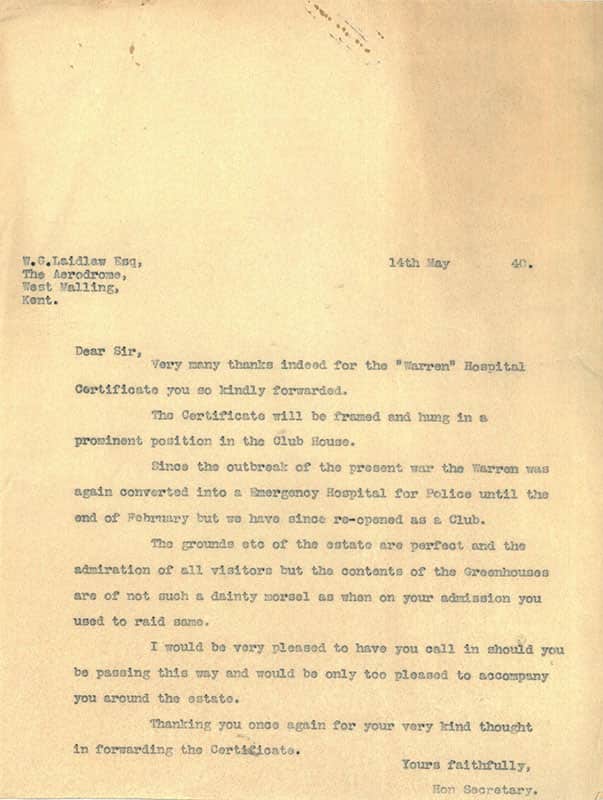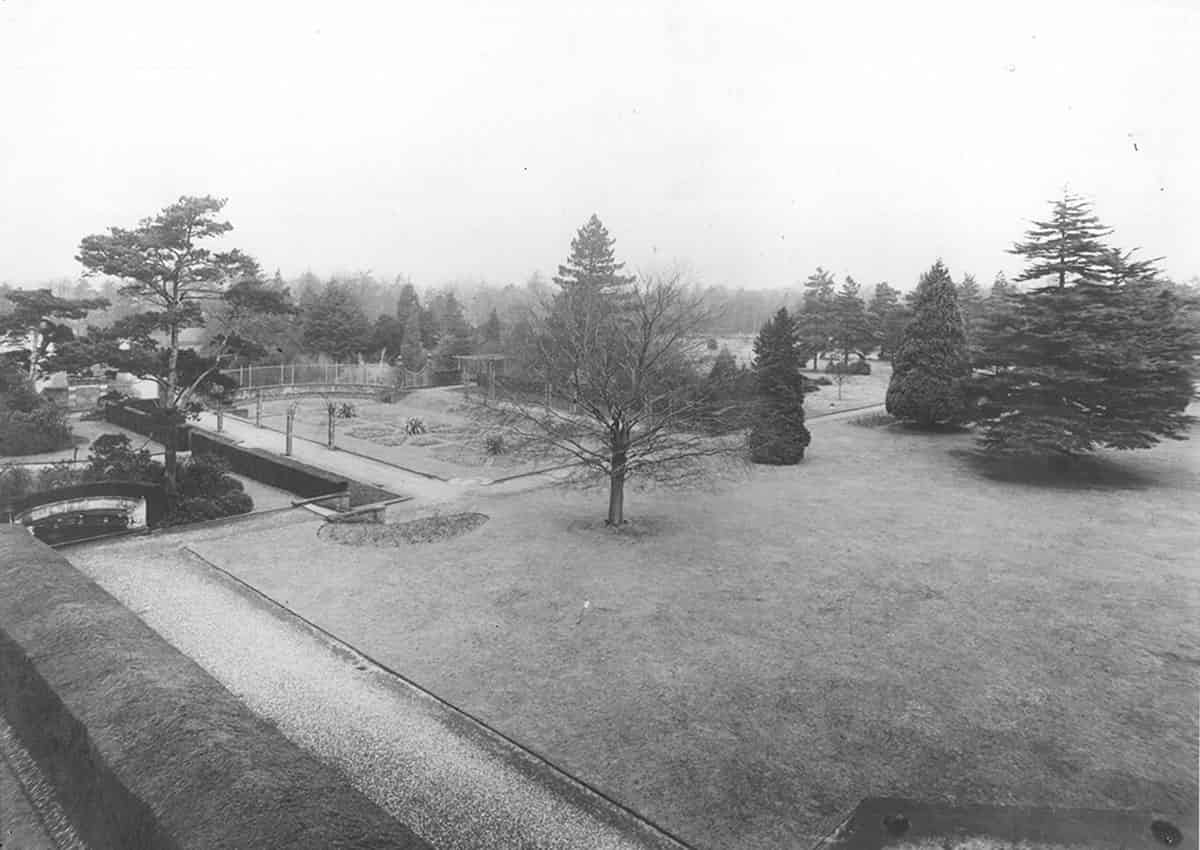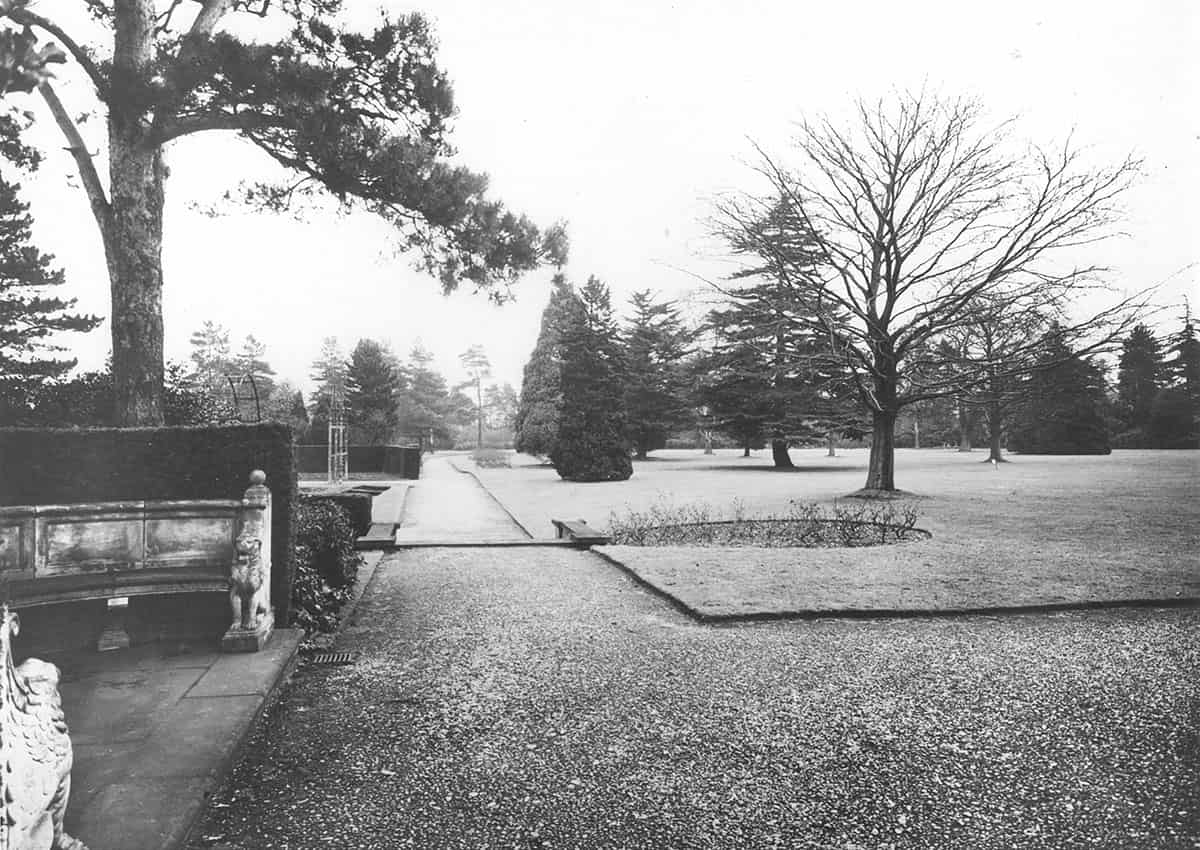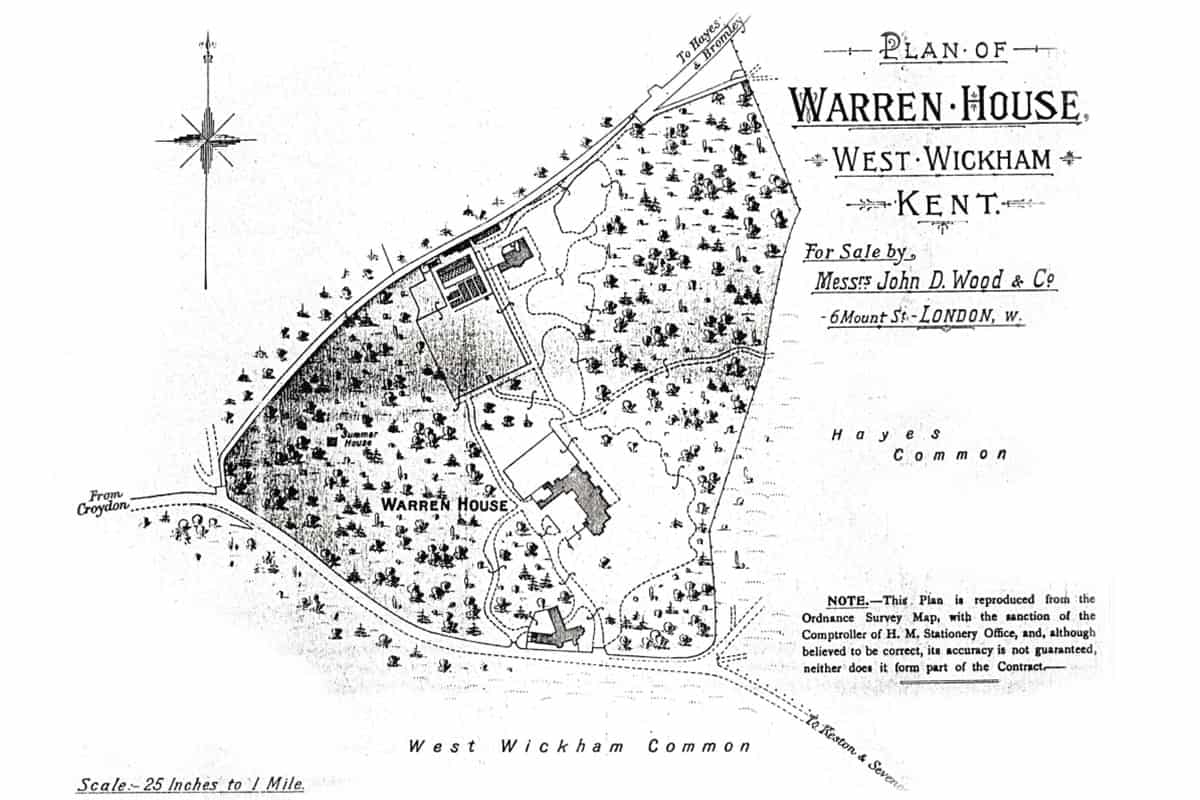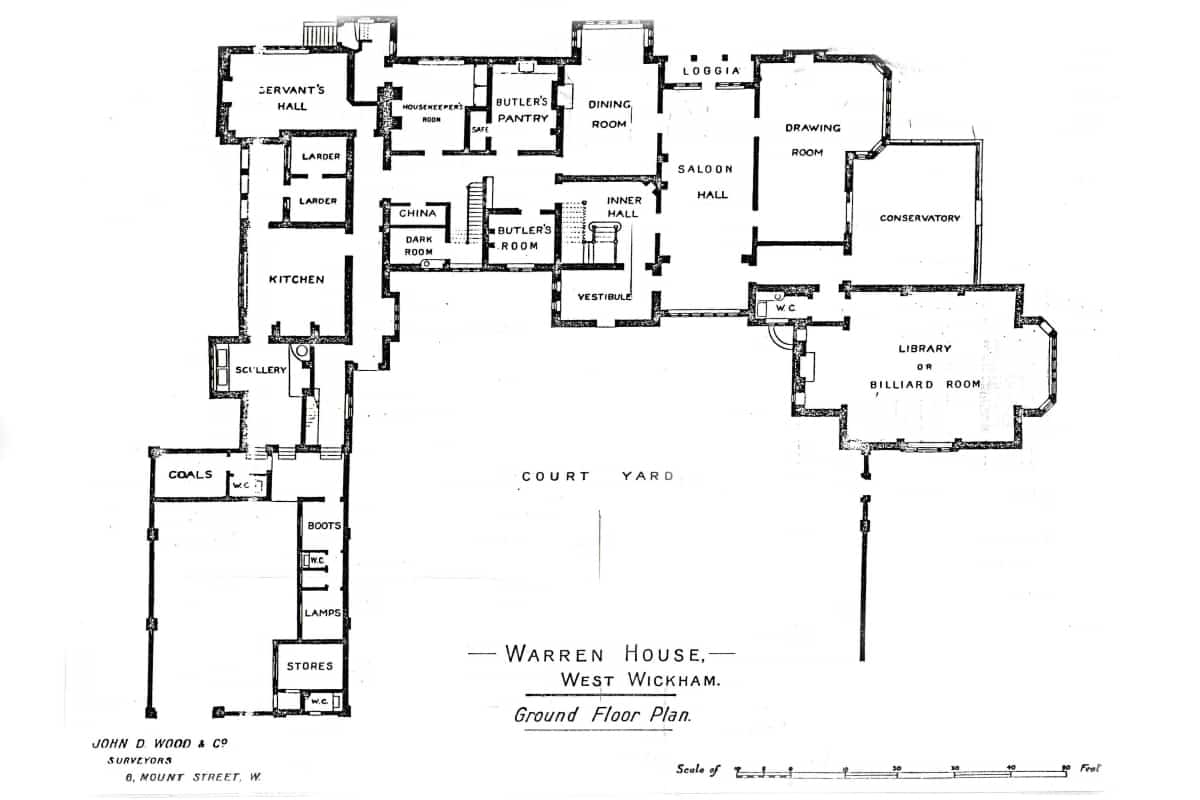A BRIEF HISTORY OF THE WARREN
This beautiful Grade II Listed building was originally called “Warren House”, a name derived from the wooded valley on the west side of the house, know locally as the Warren because it was overrun with rabbits. Built by Walter Maximilian de Zoete, the son of a stockbroker who was noted for his conservatism and a man who also disliked any changes, designed in a Flemish style which is noticeable in the stepped gables, a style not common in this country.
In 1885 the leasehold interest was assigned to Martin R Smith, who added another 16 acres to the six acre site and then over the years built a new wing, a billiards room, two cottages, a summer house and glasshouses.
In 1909 the house became the property of Sir Robert Laidlaw M.P, the original particulars can be seen below when the house was auctioned on 9th June 1909. Robert Laidlaw loaned his mansion to the Red Cross during the First World war, during this time he also donated £25 per week, a fully equipped operating theatre, use of his five servants and as much produce from the gardens as needed.
Warren House sheltered 630 patients during its term as an Auxiliary Hospital, some returned to the battlefield, those who survived kept up the friendships they made at Warren House for many years after the war.
A snapshot of 1934
In 1934 it was acquired for the police, to be used as a sports club, making it the fourth and final one to be purchased for this purpose. Each of the four areas into which London had been divided for police purposes now has its own sports ground. The Warren is to serve what is officially known as No. 4 District, which covers the south side of the Thames.
The purchase of the ground completes the scheme which Lord Trenchard inaugurated. So that the police sports club should be placed on a sound basis he introduced a voluntary levy on all police officers and staff.
After the General Strike a large sum of money was raised by public donations to mark the way in which the police carried out their duties, a considerable part was allocated to the Police Sports Fund. It is from this fund that the four grounds have been acquired.
These five photographs were taken at the time the grounds were purchased by the Police in 1934. The landscape has altered considerably since then. We believe the photographs were taken from the following locations.
Where the Corner of the Main Building meets the Conservatory
The white cricket pavilion towards the main building
The stables area towards the building or the quiet garden
A Walk Through History 1909 – 1994
The three books below make an interesting snapshot of the history of Warren House, now know as The Warren. In 1909 the estate was auctioned, the particulars can been seen below and give a good image of the original building and its use, to include the nursery suite of five rooms and the five servant bedrooms and domestic offices.
Sales particulars from June 1909
A brief history of the Club
Abridged version of the Club’s history
A Pictorial Snapshot
Find Us
Address
Metropolitan Police Hayes Sports Club Ltd.
The Warren
Croydon Road
Hayes, Bromley
Kent, BR2 7AL
